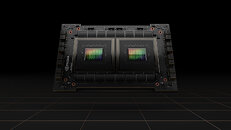
NVIDIA Proposes that AI Will Accelerate Climate Research Innovation
AI and accelerated computing will help climate researchers achieve the miracles they need to achieve breakthroughs in climate research, NVIDIA founder and CEO Jensen Huang said during a keynote Monday at the Berlin Summit for the Earth Virtualization Engines initiative. "Richard Feynman once said that "what I can't create, I don't understand" and that's the reason why climate modeling is so important," Huang told 180 attendees at the Harnack House in Berlin, a storied gathering place for the region's scientific and research community. "And so the work that you do is vitally important to policymakers to researchers to the industry," he added.
To advance this work, the Berlin Summit brings together participants from around the globe to harness AI and high-performance computing for climate prediction. In his talk, Huang outlined three miracles that will have to happen for climate researchers to achieve their goals, and touched on NVIDIA's own efforts to collaborate with climate researchers and policymakers with its Earth-2 efforts. The first miracle required will be to simulate the climate fast enough, and with a high enough resolution - on the order of just a couple of square kilometers.
To advance this work, the Berlin Summit brings together participants from around the globe to harness AI and high-performance computing for climate prediction. In his talk, Huang outlined three miracles that will have to happen for climate researchers to achieve their goals, and touched on NVIDIA's own efforts to collaborate with climate researchers and policymakers with its Earth-2 efforts. The first miracle required will be to simulate the climate fast enough, and with a high enough resolution - on the order of just a couple of square kilometers.





















